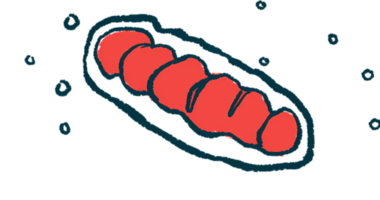Neuroprotective effect seen in cannabinol and its analogs
Researchers aim to refine CBN compounds to make them more effective

Researchers have developed analogs of cannabinol (CBN), a lesser-known cannabinoid, that show neuroprotective abilities in lab studies not unlike the effects from the active chemicals in the cannabis plant, which are a benefit in Parkinson’s as well as other neurodegenerative diseases.
“Not only does CBN have neuroprotective properties, but its derivatives have the potential to become novel therapeutics for various neurological disorders,” Pamela Maher, PhD, principal investigator at the the Salk Institute and the study’s senior researcher, said in a press release. “We were able to pinpoint the active groups in CBN that are doing that neuroprotection, then improve them to create derivative compounds that have greater neuroprotective ability and drug-like efficacy.”
The study, “Fragment-based drug discovery and biological evaluation of novel cannabinol-based inhibitors of oxytosis/ferroptosis for neurological disorders,” was published in Redox Biology.
CBN is believed to preserve mitochondrial function of nerve cells. Mitochondria are the cell’s powerhouses and key for maintaining nerve cells, the dysfunction of which promotes the development of Parkinson’s.
Researchers at the Salk Institute have shown that CBN protected neurons against a form of cell death that’s dependent on iron called oxytosis/ferroptosis by directly targeting the mitochondria, helping to preserve its key functions. This type of cellular death happens when cells fail to protect themselves against damage from harmful substances.
Mitochondria contribute to ferroptosis regulation through their involvement in various metabolic pathways. When mitochondria are not working correctly, ferroptosis can occur. This dysregulation has been linked to diseases that affect the nervous system, including Alzheimer’s, Parkinson’s and traumatic brain injury.
Developing CBN analogues for neuroprotection
Here, as part of a collaboration with colleagues at San Diego State University, the researchers designed four CBN-inspired compounds and evaluated whether their neuroprotective abilities were further enhanced by conducting in vitro, or lab, assays.
“We were looking for CBN analogs that could get into the brain more efficiently, act more quickly, and produce a stronger neuroprotective effect than CBN itself,” said Zhibin Liang, the study’s first author and postdoctoral researcher in Maher’s lab. “The four CBN analogs we landed on had improved medicinal chemical properties, which was exciting and really important to our goal of using them as therapeutics.”
The researchers first broke CBN into smaller fragments and analyzed their ability to inhibit oxytosis/ferroptosis in lab assays. Based on the assay’s outcomes, the researchers designed four new CBN analogs, which were tweaked slightly to carry a different molecular architecture than the original CBN.
They then tested the neuroprotective abilities of the four new analogs against three different insults that trigger oxytosis/ferroptosis in mouse and human nerve cells. All four protected the cells from cell death and their neuroprotective abilities were similar to CBN.
The four analogs, along with the original CBN, were also tested in a Drosophila fruit fly model of mild traumatic brain injury.
One of them, CP1, enhanced the flies’ overall survival by a mean of 11.9 days. The control CBN extended the flies survival by a mean of 9.4 days. Following three weeks of exposure to the traumatic brain injury, the flies’ mortality was significantly reduced in the CP1-treated group compared with flies given an innocuous solution, from 70.2% to 49.5%.
“Our findings help demonstrate the therapeutic potential of CBN, as well as the scientific opportunity we have to replicate and refine its drug-like properties,” Maher said. “Could we one day give this CBN analogs to football players the day before a big game, or to car accident survivors as they arrive in the hospital? We’re excited to see how effective these compounds might be in protecting the brain from further damage.”
Future studies will assess how the analogs could prevent nerve cell decline with aging, the researchers said.






